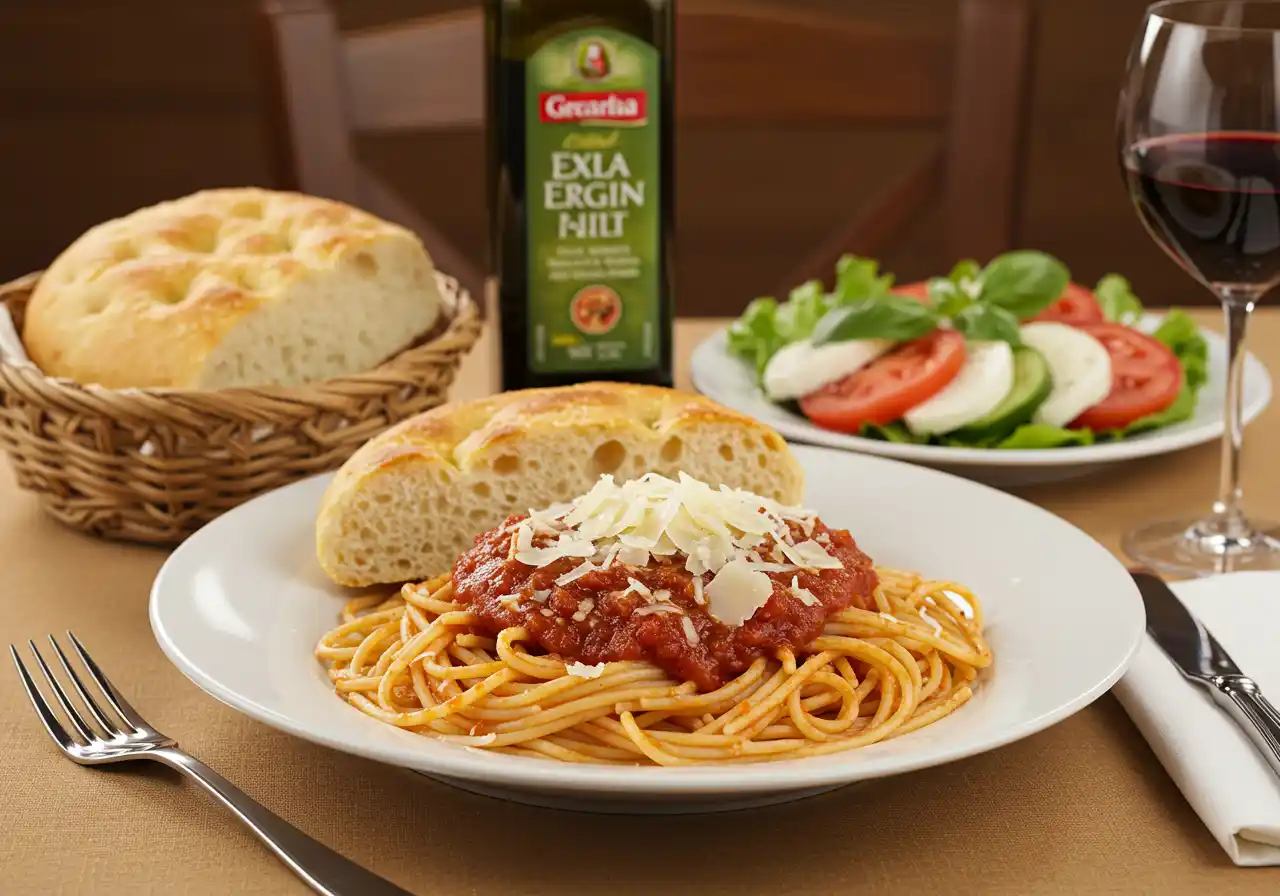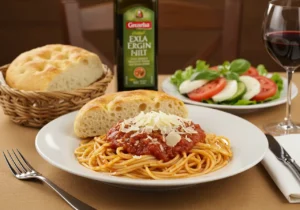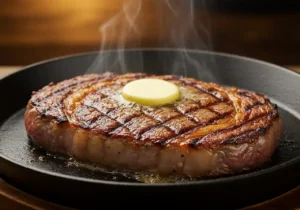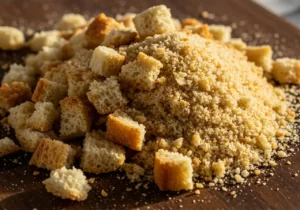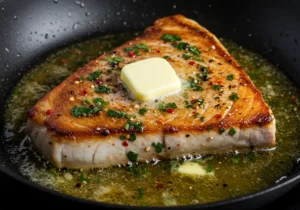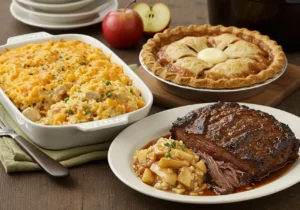Italian cooking recipes captivate globally with rich flavors, simple ingredients, and heartwarming, timeless traditions. From rustic countryside kitchens in Tuscany to bustling trattorias in Rome, the essence of Italian cuisine lies in its ability to transform everyday ingredients into unforgettable meals. In this post, we’re diving into 10 must-try Italian cooking recipes loved by chefs—each one a delicious testament to Italy’s culinary legacy. Home cook or food lover, these chef-approved dishes bring authentic Italian flavor into your kitchen.
Classic Italian Cooking Recipes: Pasta Dishes Every Chef Swears By
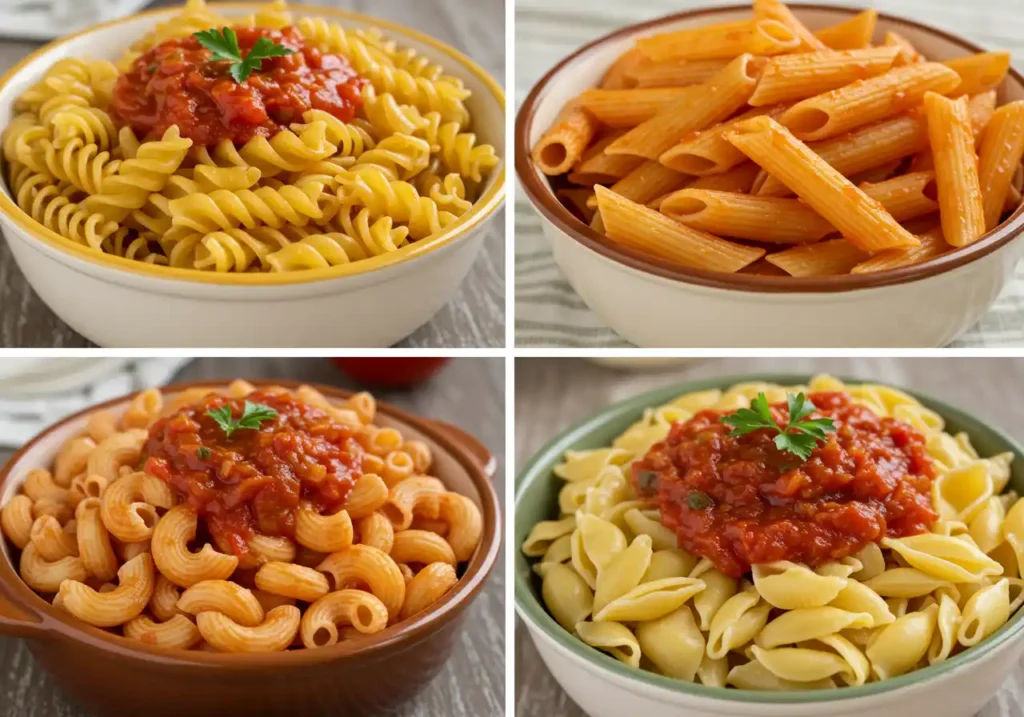
When it comes to authentic Italian recipes, nothing captures the heart of the cuisine like a well-made pasta dish. These timeless staples are not just popular Italian dinner ideas, they’re culinary art forms passed down through generations. Craving creamy or spicy? These four Italian pasta recipes are must-tries for chefs and home cooks alike.
Spaghetti Carbonara – A Roman Classic
From Rome, Spaghetti Carbonara is a comforting dish showing that simplicity is the key to greatness. Made with just five ingredients—spaghetti, eggs, Pecorino Romano cheese, guanciale (cured pork cheek), and black pepper—this dish is all about timing and technique.
The key to a perfect carbonara is in the emulsification of the egg and cheese mixture, which creates a velvety sauce without scrambling the eggs. Chefs toss hot pasta with sauce off heat to avoid curdling and achieve a creamy texture.
✨ Chef Tip: Use guanciale instead of pancetta for a more authentic flavor and always grind your black pepper fresh—it makes a noticeable difference.
If you’re craving twists and turns in your pasta bowl, our Fusilli Pasta Recipes will bring the flavor you’re looking for.
Fettuccine Alfredo – Rich and Creamy Perfection
Though often associated with American-Italian dining, Fettuccine Alfredo actually has its roots in early 20th-century Rome. Original Fettuccine Alfredo uses butter, Parmesan, and pasta water starch to create a creamy, rich sauce.
Today’s version often includes heavy cream for a more indulgent twist. Traditional or modern, this silky pasta dish is decadent, luxurious, and surprisingly easy to make.
✨ Chef Tip: Always use high-quality Parmigiano-Reggiano and melt your butter slowly to prevent separation. Pair with grilled chicken or shrimp for a satisfying meal.
Don’t overlook the tiny but mighty ditalini—check out our best Ditalini Pasta Recipes for cozy soups and hearty dishes.
Penne Arrabbiata – Bold and Spicy Simplicity
If you love a bit of heat, Penne Arrabbiata is the Italian classic for you. “Arrabbiata” means “angry” in Italian, named for the spicy red chili peppers that give the dish its kick.
Made with penne pasta, garlic, extra virgin olive oil, red pepper flakes, and tomato sauce, this recipe is a favorite among those who appreciate bold flavors. It’s quick, easy, and packs a punch—making it a go-to for weeknight dinners or last-minute guests.
✨ Chef Tip: Sauté garlic until just golden before adding tomatoes. This prevents bitterness and enhances depth. Add fresh parsley at the end for a pop of color and flavor.
Love penne? Discover how to turn this humble pasta into something extraordinary with our quick and easy Penne Pasta Recipes.
Lasagna alla Bolognese – Layers of Tradition
Lasagna alla Bolognese, a labor of love, is the iconic Italian dish celebrating rich, slow-cooked flavors. Originating from Emilia-Romagna, this lasagna is made with layers of fresh pasta, rich Bolognese sauce (ragù), béchamel, and Parmigiano-Reggiano cheese.
The Bolognese sauce is what sets this dish apart—crafted with a base of ground beef and pork, onions, celery, carrots, tomatoes, wine, and milk, and simmered for hours to deepen its flavor. When layered and baked, it becomes a show-stopping centerpiece that’s perfect for holidays and family gatherings.
✨ Chef Tip: Use fresh pasta sheets for a more authentic texture, and let the lasagna rest for at least 15 minutes after baking to set properly for cleaner slices.
These four pasta masterpieces not only showcase the soul of Italian cuisine, but also highlight the balance of flavor, tradition, and technique that defines chef-approved Italian meals. Try mastering one each week—you’ll soon find yourself cooking like a true Italian chef.
Cavatappi is the pasta you didn’t know you needed—explore our top recipes that make this curly noodle shine.
Regional Italian Cooking Recipes You’ve Never Tried
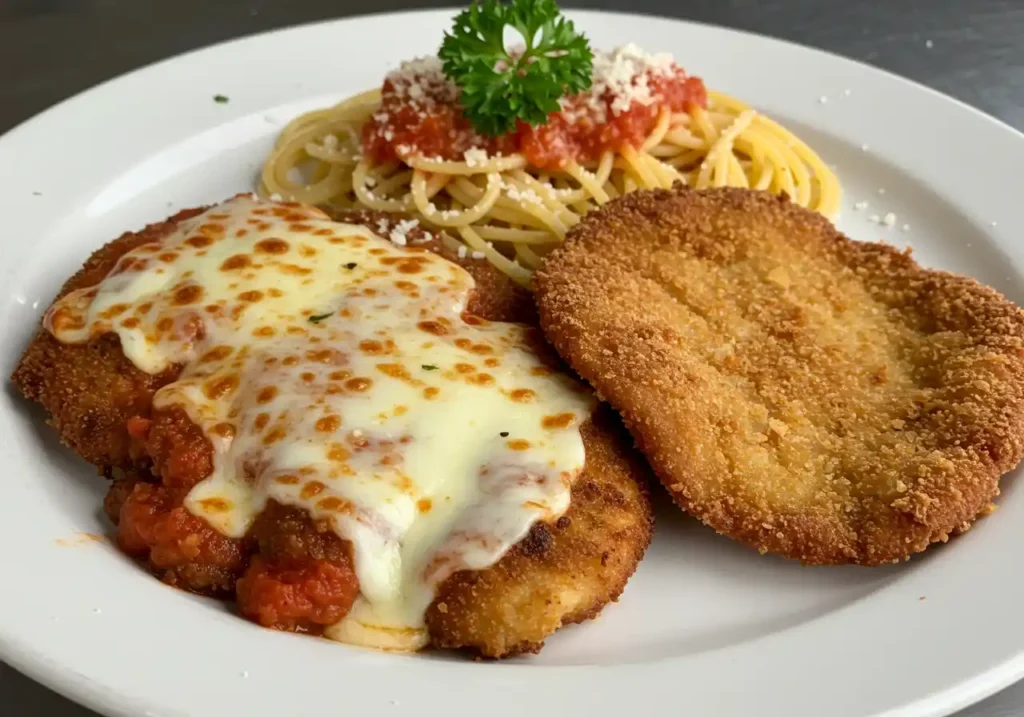
Italy’s rich culinary history is as diverse as its geography. While many people are familiar with the staples of Italian-American cuisine, regional Italian dishes offer a completely different, often more rustic and authentic experience. Each region has its own specialties based on local ingredients, history, and traditions. Here are three traditional Italian dishes that bring countryside flavors from different regions straight to your table.
And no Italian kitchen is complete without olives—learn how to use them creatively in our dedicated Olive Recipes guide.
Orecchiette with Broccoli Rabe – Puglia’s Hidden Gem
This Orecchiette con Cime di Rapa is a beloved dish from Puglia, Italy’s sun-soaked heel region. Orecchiette means “little ears,” named for its shape that holds sauces and vegetable bits perfectly.
This dish features bitter broccoli rabe (rapini), sautéed in extra virgin olive oil with plenty of garlic and chili flakes. It’s the perfect example of rustic Italian cooking—minimal ingredients, big flavors.
✨ Chef Tip: Blanch the broccoli rabe briefly before sautéing to reduce bitterness. A generous drizzle of olive oil and a grating of Pecorino Romano at the end elevates the dish.
This humble yet bold pasta showcases how Southern Italians turn simple, local produce into hearty comfort food.
Risotto alla Milanese – Golden, Creamy, and Luxurious
Heading north to Lombardy, we find Risotto alla Milanese, a dish known for its stunning golden hue and creamy texture. The secret ingredient? Saffron, one of the world’s most precious spices, which gives this dish its vibrant color and delicate flavor.
Made with Arborio rice, white wine, beef or chicken stock, butter, onions, and Parmesan cheese, this risotto is a symbol of Northern Italian elegance. Traditionally served alongside Osso Buco, it’s also a standout on its own.
✨ Chef Tip: Stir continuously to release the starch from the rice, and add the broth slowly in batches. Finish with a knob of cold butter and a handful of Parmigiano-Reggiano for extra creaminess.
This is not your average rice dish—it’s a celebration of texture, aroma, and Northern Italian sophistication.
Parmigiana di Melanzane – Sicily’s Comfort Food
In Sicily, where the Mediterranean sun nourishes a bounty of vegetables, Parmigiana di Melanzane (Eggplant Parmesan) reigns as a cherished classic. This traditional Italian meal features thinly sliced eggplants, which are salted to remove bitterness, then fried or baked until golden.
Layered with homemade marinara sauce, fresh basil, mozzarella, and Parmigiano-Reggiano, the dish is then baked until bubbly and browned on top. It’s often served as a main course in the south, unlike the side-dish version more familiar to non-Italians.
✨ Chef Tip: For a lighter version, you can bake the eggplant slices instead of frying. Let the dish rest before slicing to help it hold together better.
Parmigiana di Melanzane reflects tradition, resourcefulness, and rich layers of flavor passed down through generations.
These regional Italian cooking recipes are more than just meals—they are cultural snapshots. Whether it’s the bold bitterness of Puglia, the luxurious saffron of Milan, or the sunny flavors of Sicily, you’ll find that exploring these lesser-known dishes deepens your appreciation for Italy’s culinary diversity.
Authentic Sauces and Condiments That Define Italian Flavor
A great Italian dish is often defined not just by its pasta or main ingredients, but by the sauces and condiments that bring everything together. Italian cuisine prides itself on bold, fresh flavors that complement simple ingredients, and nowhere is this more evident than in the classic sauces that grace pasta and other dishes. Mastering these Italian sauces and pasta pairings will elevate your cooking and bring true Italian authenticity into your kitchen.
Marinara Sauce – The Soul of Italian Cooking Recipes
Few sauces embody the heart of Italy like Marinara Sauce. This simple yet rich tomato-based sauce is a staple for countless dishes, from pasta to pizza. Made by slow-simmering ripe tomatoes with garlic, fresh basil, and extra virgin olive oil, it captures the essence of fresh Italian flavors.
The key to a perfect marinara is patience—allowing the sauce to cook gently brings out the natural sweetness of the tomatoes and melds the garlic and basil into a fragrant, harmonious base.
✨ Chef Tip: Use San Marzano tomatoes when possible—they’re sweeter and less acidic, making your sauce richer and smoother. Add a pinch of sugar only if your tomatoes are too tart.
Marinara sauce is incredibly versatile, pairing well with spaghetti, meatballs, or as a dipping sauce for bread, making it a must-know for anyone learning how to cook Italian food authentically.
Looking for a lighter base for your Italian toppings? Our Cottage Cheese Flatbread is a wholesome and tasty option.
Pesto Genovese – Green Gold from Liguria
From the coastal region of Liguria comes the vibrant and aromatic Pesto Genovese. Unlike cooked tomato sauces, pesto is a raw sauce made by blending fresh basil leaves, pine nuts, Parmesan cheese, garlic, and extra virgin olive oil into a luscious green paste.
This sauce is a perfect example of Italy’s love for fresh, high-quality ingredients. Its bright flavor and creamy texture make it a popular companion to pasta, especially trofie or trenette, but it also shines as a spread or drizzle on vegetables and grilled meats.
✨ Chef Tip: Traditionally, pesto is made with a mortar and pestle to preserve its fresh texture and vibrant color. If using a food processor, pulse gently to avoid over-blending.
Pesto Genovese brings a burst of fresh herbaceous flavor that truly defines the Ligurian culinary spirit.
Ragù alla Napoletana – A Meaty Masterpiece
While many Italian sauces feature tomatoes prominently, Ragù alla Napoletana stands out as a hearty, slow-braised meat sauce from Naples that is rich, complex, and deeply satisfying. This ragù is different from the Bolognese style—it’s made with large cuts of meat such as pork, beef, or sausage, cooked slowly in a tomato-rich sauce until tender and falling apart.
The long cooking time allows the flavors to develop fully, creating a sauce that is perfect for layering in baked pasta dishes or simply served over robust pasta shapes like rigatoni.
✨ Chef Tip: Brown the meat thoroughly before simmering to deepen the flavor. Be patient—this sauce can take several hours but the results are worth the wait.
Learning to make Ragù alla Napoletana is essential for those looking to master traditional Southern Italian cooking and appreciate the artistry behind classic Italian sauces and pasta.
Mastering these three iconic sauces will provide a solid foundation for exploring the vast world of Italian cooking. Each sauce carries with it the traditions, history, and flavors that make Italian cuisine so beloved worldwide. Marinara, pesto, or ragù—each sauce brings bold, unmistakable Italian flavor to your dishes.
Chefs’ Secrets: Tips to Master Italian Cooking Recipes at Home
Italian cuisine may seem deceptively simple, but behind every memorable dish lies careful technique, quality ingredients, and respect for tradition. Top chefs know that homemade Italian dishes are all about balancing flavors, textures, and timing — and these secrets can help you bring restaurant-worthy meals into your own kitchen. Here are some chef-approved tips that will elevate your cooking and help you master the best Italian recipes with confidence.
Use High-Quality Ingredients Like Olive Oil and San Marzano Tomatoes
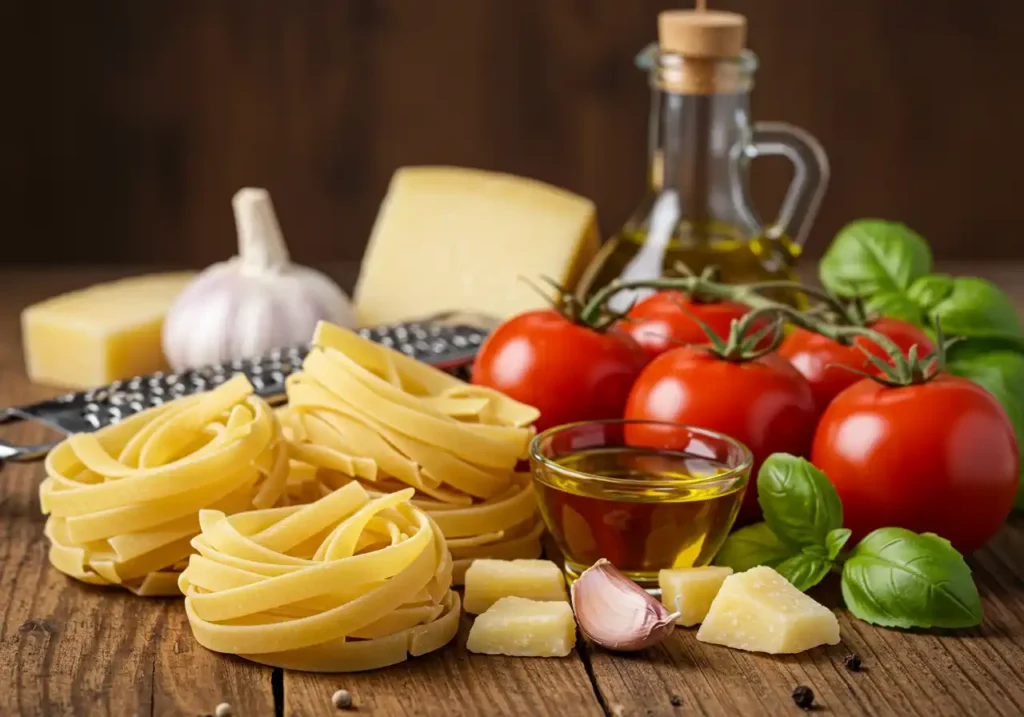
One universal truth among Italian chefs is that the quality of your ingredients directly impacts the final dish. Using the best extra virgin olive oil, ripe San Marzano tomatoes, fresh herbs, and authentic cheeses will set your meals apart from the start.
Olive oil isn’t just a cooking medium; it’s the backbone of flavor in many Italian recipes, whether drizzled raw over finished dishes or used to sauté vegetables and garlic. Similarly, San Marzano tomatoes, grown in volcanic soil near Naples, offer a natural sweetness and lower acidity that make sauces vibrant and balanced.
✨ Chef Tip: Invest in good-quality olive oil and keep it refrigerated after opening to preserve freshness. When shopping for canned tomatoes, look for the DOP (Denominazione d’Origine Protetta) label to ensure authenticity.
Timing and Simplicity Over Complexity in Italian Cooking Recipes

Italian cooking thrives on restraint and precision rather than complicated techniques. Chefs emphasize that perfect timing—whether it’s al dente pasta or just-right sautéing—makes all the difference.
Most Italian dishes use a handful of ingredients, allowing each to shine. Instead of overwhelming your palate with too many flavors, aim for harmony and simplicity. This means watching cooking times carefully and focusing on getting the basics right.
✨ Chef Tip: Taste often as you cook. This helps you adjust seasoning and ensures you don’t overcook key ingredients like pasta or vegetables.
Master the Art of Simmering and Seasoning
Many classic Italian cooking techniques rely on low and slow heat to develop deep, layered flavors. The secret to deep, complex flavors in Italian cooking is often slow simmering and layering seasoning throughout the cooking process. Tomato sauce or ragù, slow cooking over low heat blends flavors and builds rich, deep taste.
Don’t rush sauces—give them time to thicken and the flavors to concentrate. Finish with fresh herbs like basil or parsley to add brightness and a final burst of aroma. Proper seasoning with salt and sometimes a pinch of sugar to balance acidity is key at every stage.
✨ Chef Tip: Add salt gradually and taste as you go. Herbs should be added towards the end to preserve their fresh flavor and color.
By embracing these chef secrets—prioritizing high-quality ingredients, respecting timing and simplicity, and perfecting simmering and seasoning—you’ll create Italian meals that are authentic, vibrant, and truly memorable. Cooking Italian food is less about complex methods and more about passion, patience, and respect for the ingredients.
Sweet Italian Desserts to End on a High Note

No Italian meal is truly complete without a delicious dessert that leaves a lasting impression. Italian sweets perfectly balance indulgence with fresh, simple ingredients, fitting beautifully within the principles of the Mediterranean diet. Whether you’re new to Italian food for beginners or a seasoned cook, these classic desserts offer comforting, elegant finishes that celebrate the flavors of Italy. Here are some of the most beloved Italian desserts that chefs and food lovers alike treasure.
Tiramisu – The Crown Jewel of Italian Sweets
Tiramisu is arguably the most famous Italian dessert worldwide—and for good reason. This luscious, no-bake treat features layers of espresso-soaked savoiardi (ladyfingers) alternating with a creamy, velvety mixture of mascarpone cheese, eggs, and sugar. The whole dessert is dusted generously with cocoa powder, adding a hint of bittersweet contrast.
Tiramisu stands out for its bold coffee flavor, creamy texture, and perfect touch of sweetness. It’s a perfect dessert to prepare ahead of time, allowing the flavors to meld overnight for maximum richness.
✨ Chef Tip: Use freshly brewed espresso for dipping the ladyfingers and quality mascarpone for the best results. Avoid soaking the cookies too long to keep the layers intact.
Craving a decadent finish to your Italian dinner? Our Chocolate Cake recipe delivers richness and perfection every time.
Panna Cotta – Creamy Elegance in a Cup
Panna cotta, which means “cooked cream,” is a simple yet sophisticated dessert loved for its silky, smooth texture and subtle sweetness. Made from cream, sugar, and gelatin, panna cotta sets into a delicate custard that melts in your mouth.
This dessert is wonderfully versatile and can be served plain or paired with fresh berries, fruit coulis, or a drizzle of honey to add a bright, refreshing contrast. Its light texture makes it a favorite in Italian restaurants and perfect for an elegant, not-too-heavy finish.
✨ Chef Tip: Use whole cream and gently heat it with sugar to dissolve before adding gelatin. Chill it properly to achieve the perfect wobble texture.
Cannoli – Crunchy Shells with a Sweet Ricotta Filling
Originating from Sicily, cannoli are crispy, fried pastry tubes filled with a sweetened ricotta cheese mixture, often enhanced with chocolate chips, candied fruit, or a hint of cinnamon. Once a humble street food, cannoli have become a gourmet favorite enjoyed worldwide.
The contrast between the crunchy shell and creamy filling is irresistible. Homemade cannoli shells are fun to make, but pre-made ones offer convenience without losing flavor.
✨ Chef Tip: Use fresh ricotta and strain it well to avoid a watery filling. Fill the shells just before serving to keep them crisp.
These Italian comfort food desserts not only satisfy the sweet tooth but also showcase Italy’s culinary artistry—combining simplicity, quality ingredients, and time-honored techniques. Finish with tiramisu, panna cotta, or cannoli to make your Italian recipes unforgettable.
For a modern dessert twist after your Italian feast, treat yourself with our step-by-step Cosmic Brownies recipe.
Conclusion: Bring Authentic Italian Cooking into Your Home
Italian cooking recipes have an unmatched ability to bring warmth, flavor, and tradition straight to your kitchen. From classic pasta dishes to regional Italian specialties, and from rich, slow-simmered sauces to decadent desserts, these chef-approved recipes invite you to experience the heart of Italy wherever you are. Embracing authentic Italian recipes is more than just following a list of ingredients—it’s about appreciating fresh, high-quality components, respecting timing and technique, and celebrating simplicity and balance.
Now is the perfect time to try these Italian recipes and enjoy homemade meals full of authentic flavor. Whether you’re an aspiring home chef or simply looking to add variety to your dinner table, these dishes will inspire you to cook with passion and confidence. Try new sauces, enjoy regional dishes, and end your meal with a sweet Italian dessert.
Try these recipes, share your results, and connect with others who love the timeless charm of Italian cuisine. By doing so, you’ll not only master some of the best Italian recipes but also bring a little bit of Italy’s magic into your everyday life.
Explore More Delicious Italian Cooking Recipes and Recipes Beyond Italian Cuisine
If you’re hungry for even more culinary inspiration, why not discover a wide range of exciting recipes from different cuisines and styles? Below is a vibrant mix of dishes with images and descriptions to spark creativity and satisfy your cravings. Craving something quick or bold? These recipes promise to delight with flavor and simplicity. Scroll down and start exploring new tastes beyond Italian cooking!
- 10 Must-Try Italian Cooking Recipes Loved by Chefs
- Mexican Cooking Recipes for Beginners: Simple Steps to Bold Flavors
- Easy Carnivore Diet Recipes with 5 Ingredients or Less
- Top 15 Carnivore Diet Recipes That Actually Taste Amazing
- 15 Delicious Cuisinart Ice Cream Maker Recipes You Need to Try
- Top 5 Sugar Free Ice Cream Flavors You’ll Love
- Copycat Chick-fil-A Waffle Fries Recipe – Step-by-Step Perfection
- How to Make the Best Bread Crumbs for Your Favorite Dishes
- How to Make the Perfect Ice Cream Cone : Tips, Tricks & Delicious Recipes
- Bluey Cake Tutorial: How to Create the Perfect Themed Cake for Kids’ Parties
- Swordfish Steak Recipe: How to Get It Perfect Every Time
- Princess Cake Recipe: How to Make the Perfect Swedish Prinsesstårta
- Nanalan Cake Recipe: How to Make This Adorable and Nostalgic Treat
- DIY Minecraft Cake: How to Make the Perfect Pixelated Treat
- Authentic Terra Massoud Recipe: A Step-by-Step Guide to Perfection
- How to Make Chocolate Gravy from Scratch Quick and Easy Guide
- How to Make the Perfect Tini Mac and Cheese – Step-by-Step Guide
- Taste of Home Recipes: 25 Comforting Dishes That Feel Like a Warm Hug
- Easy Ways to Customize Your Madeleine using cream cake
- How to Make Gordon Ramsay’s Chocolate Cream Cheese Pound Cake
- Green Pumpkin Cooking Guide: 10+ Asian Recipes for Savory Delights

